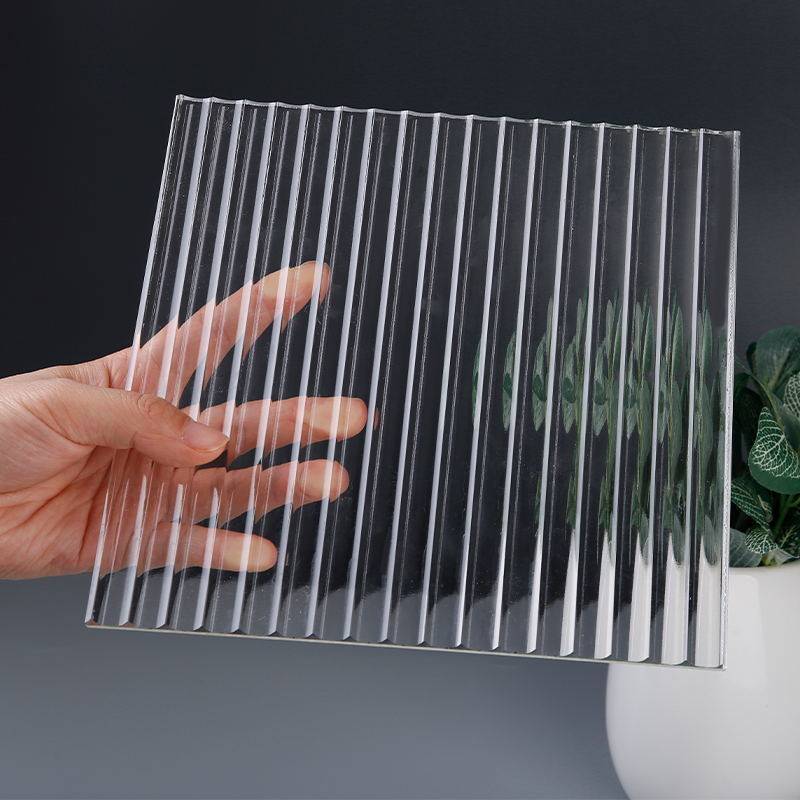Understanding Tempered Laminated Glass Specifications and Applications
Tempered laminated glass is a remarkable material that combines the safety and strength of tempered glass with the durability and resilience of laminated glass. This unique combination allows tempered laminated glass to be used in various demanding applications, from building facades and skylights to safety glass for vehicles and other specialized purposes. In this article, we will delve into the specifications, characteristics, and applications of tempered laminated glass.
What is Tempered Laminated Glass?
Tempered laminated glass consists of two or more layers of glass that are bonded together with an interlayer, typically made of polyvinyl butyral (PVB) or ethylene-vinyl acetate (EVA). The glass panels are first tempered, which involves heating them to a high temperature and then rapidly cooling them. This process increases the glass's strength and thermal resistance. The laminated aspect comes from the interlayer that holds the glass layers together, providing additional safety features.
Key Specifications
1. Thickness The thickness of tempered laminated glass can vary based on the application and the desired safety rating. Common thicknesses range from 6mm to 12mm, but custom options can be produced as needed. The thickness of the interlayer also contributes to the overall performance.
2. Strength Tempered glass is significantly stronger than standard glass. It can withstand impact forces greater than non-tempered glass, making it ideal for high-traffic areas and regions prone to severe weather. The laminated layer further enhances safety; if broken, the glass fragments adhere to the interlayer rather than scattering.
3. Safety Ratings Tempered laminated glass meets various safety standards, such as ASTM C1172 and ANSI Z97.1 in the United States, which ensure that the material can withstand specific impacts without shattering dangerously.
4. UV Protection The PVB or EVA interlayer can block up to 99% of ultraviolet (UV) rays, protecting interiors from ultraviolet damage, such as fading and degradation.
5. Acoustic Performance The interlayer also provides sound attenuation properties, making tempered laminated glass an excellent choice for buildings in noisy environments. The thickness of the interlayer and the configuration of the glass layers can be tailored to achieve desired acoustic ratings.
tempered laminated glass specification
6. Thermal Performance Tempered laminated glass can be manufactured to improve thermal insulation, reducing heat loss and improving energy efficiency in buildings. Low-emissivity (Low-E) coatings can be added to enhance performance further.
Applications of Tempered Laminated Glass
1. Architectural Applications In the construction industry, tempered laminated glass is widely used in curtain walls, skylights, and glass floors. Its strength and aesthetic appeal make it a favorite among architects and builders seeking modern and safe designs.
2. Automotive Industry Safety glass in vehicles often employs tempered laminated glass for windshields and side windows. This glass provides structural integrity and passenger safety in the event of an accident.
3. Residential Use Homeowners are increasingly choosing tempered laminated glass for patio doors, windows, and shower enclosures. Its safety features offer peace of mind, particularly in homes with children or pets.
4. Marine Applications The marine industry utilizes tempered laminated glass for boat windows and canopies, where strength and clarity are crucial.
5. Public Transport Buses and trains often feature tempered laminated glass to ensure passenger safety while providing visibility and reducing noise levels.
Conclusion
Tempered laminated glass is a versatile and high-performance material that meets the demanding requirements of both safety and design. Its combination of strength, safety, UV protection, and acoustic performance makes it ideal for various applications across multiple industries. As architectural and design trends continue to evolve, tempered laminated glass will remain an integral component for creating safe, efficient, and aesthetically pleasing environments. Understanding its specifications and benefits is essential for architects, builders, and consumers alike when making informed choices for their projects.
 Afrikaans
Afrikaans  Albanian
Albanian  Amharic
Amharic  Arabic
Arabic  Armenian
Armenian  Azerbaijani
Azerbaijani  Basque
Basque  Belarusian
Belarusian  Bengali
Bengali  Bosnian
Bosnian  Bulgarian
Bulgarian  Catalan
Catalan  Cebuano
Cebuano  Corsican
Corsican  Croatian
Croatian  Czech
Czech  Danish
Danish  Dutch
Dutch  English
English  Esperanto
Esperanto  Estonian
Estonian  Finnish
Finnish  French
French  Frisian
Frisian  Galician
Galician  Georgian
Georgian  German
German  Greek
Greek  Gujarati
Gujarati  Haitian Creole
Haitian Creole  hausa
hausa  hawaiian
hawaiian  Hebrew
Hebrew  Hindi
Hindi  Miao
Miao  Hungarian
Hungarian  Icelandic
Icelandic  igbo
igbo  Indonesian
Indonesian  irish
irish  Italian
Italian  Japanese
Japanese  Javanese
Javanese  Kannada
Kannada  kazakh
kazakh  Khmer
Khmer  Rwandese
Rwandese  Korean
Korean  Kurdish
Kurdish  Kyrgyz
Kyrgyz  Lao
Lao  Latin
Latin  Latvian
Latvian  Lithuanian
Lithuanian  Luxembourgish
Luxembourgish  Macedonian
Macedonian  Malgashi
Malgashi  Malay
Malay  Malayalam
Malayalam  Maltese
Maltese  Maori
Maori  Marathi
Marathi  Mongolian
Mongolian  Myanmar
Myanmar  Nepali
Nepali  Norwegian
Norwegian  Norwegian
Norwegian  Occitan
Occitan  Pashto
Pashto  Persian
Persian  Polish
Polish  Portuguese
Portuguese  Punjabi
Punjabi  Romanian
Romanian  Russian
Russian  Samoan
Samoan  Scottish Gaelic
Scottish Gaelic  Serbian
Serbian  Sesotho
Sesotho  Shona
Shona  Sindhi
Sindhi  Sinhala
Sinhala  Slovak
Slovak  Slovenian
Slovenian  Somali
Somali  Spanish
Spanish  Sundanese
Sundanese  Swahili
Swahili  Swedish
Swedish  Tagalog
Tagalog  Tajik
Tajik  Tamil
Tamil  Tatar
Tatar  Telugu
Telugu  Thai
Thai  Turkish
Turkish  Turkmen
Turkmen  Ukrainian
Ukrainian  Urdu
Urdu  Uighur
Uighur  Uzbek
Uzbek  Vietnamese
Vietnamese  Welsh
Welsh  Bantu
Bantu  Yiddish
Yiddish  Yoruba
Yoruba  Zulu
Zulu 

